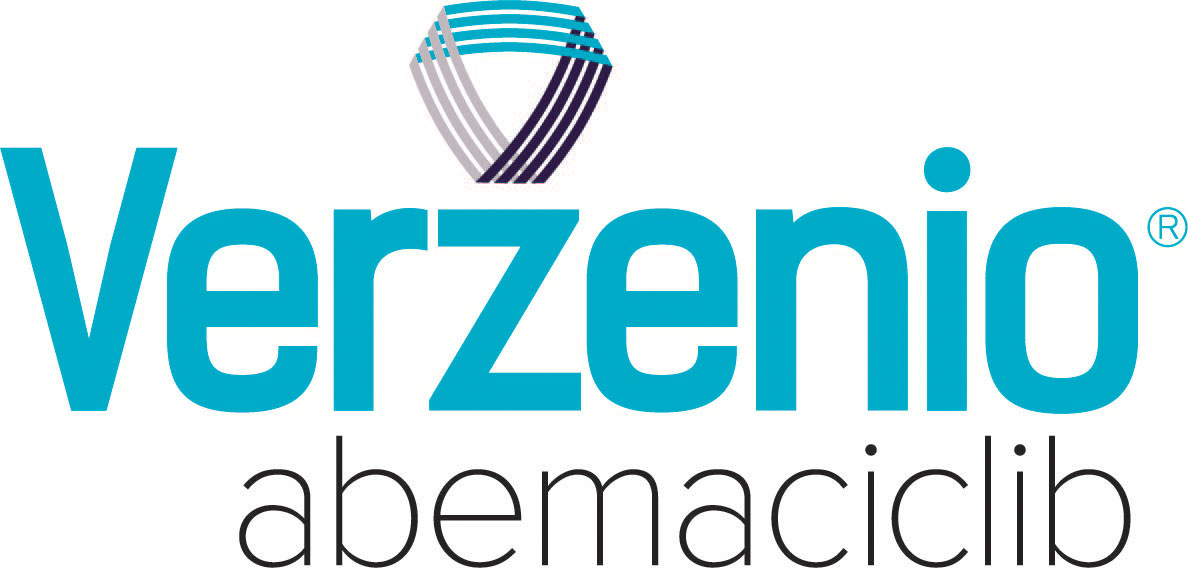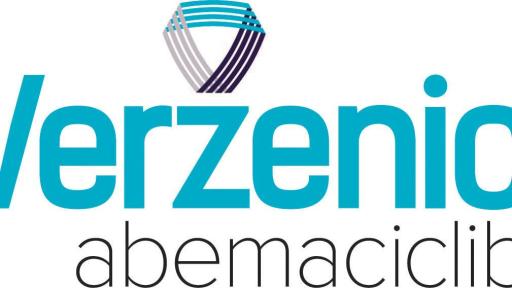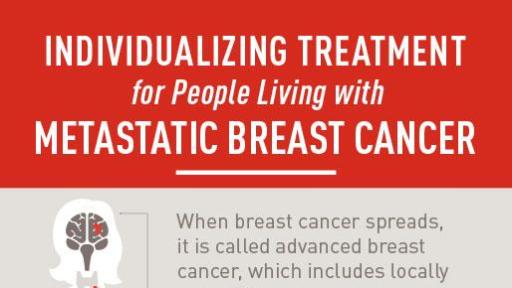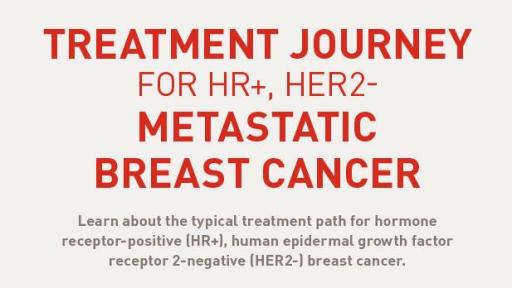Verzenio® (abemaciclib) Significantly Extends Life by a Median of 9.4 Months for Women with HR+, HER2- Advanced Breast Cancer in MONARCH 2 Study
Verzenio plus fulvestrant significantly extended life to a median of 46.7 months vs. 37.3 months compared to fulvestrant alone – MONARCH 2 showed statistically significant results for women whose disease progressed following endocrine therapy
Overall survival results were consistent across subgroups, including in women with poor prognostic factors – whose cancer quickly returned or spread to their organs, such as liver or lungs
Data presented at the European Society for Medical Oncology (ESMO) 2019 Congress in the Presidential Symposium and simultaneously published in JAMA Oncology
INDIANAPOLIS, September 29, 2019 – Eli Lilly and Company (NYSE: LLY) today announced Verzenio® (abemaciclib) in combination with fulvestrant significantly extended life by a median of 9.4 months in women with hormone receptor-positive (HR+), human epidermal growth factor receptor 2-negative (HER2-) advanced or metastatic breast cancer previously treated with endocrine therapy (median of 46.7 months vs. median of 37.3 months with placebo plus fulvestrant; HR: 0.757; 95% CI: 0.606, 0.945; P = 0.0137). Results from the Phase 3 MONARCH 2 clinical trial, which included both pre/peri- and postmenopausal women, were consistent across subgroups. These results were presented today as a late-breaking abstract in the Presidential Symposium at the European Society for Medical Oncology (ESMO) 2019 Congress in Barcelona, Spain and simultaneously published in JAMA Oncology.
"When patients receive a diagnosis of advanced breast cancer, they learn that their disease is treatable, but incurable. This is devastating news to those of us living with the disease, because we each have a lot more living to do with our loved ones and friends and goals we want to achieve. We patients want therapies that can result in longer life," said Shirley Mertz, president of the Metastatic Breast Cancer Network. "Hearing that the results of MONARCH 2 showed significant improvement in overall survival for women living with HR+, HER2- advanced breast cancer is exciting and welcomed. Women with this type of breast cancer now have a treatment option that may allow them more time to achieve their dreams."
Additionally, in women previously treated with endocrine therapy whose cancer quickly returned or spread to other parts of the body, called primary endocrine resistance, the results were consistent with the intent-to-treat (ITT) population (HR: 0.686; 95% CI: 0.451, 1.043). Similar results were observed in women whose cancer spread to their organs, such as liver or lungs (also known as visceral disease; HR: 0.675; 95% CI: 0.511, 0.891). These are characteristics of aggressive disease that indicate a woman may be more likely to do worse. Both of these analyses were pre-defined and results are consistent with the ITT results from the MONARCH 2 study which had previously demonstrated a statistically significant improvement in the primary endpoint of progression-free survival, with overall survival as a secondary endpoint of the trial.
In addition to extending life, an exploratory analysis of these data has shown Verzenio in combination with fulvestrant delayed the time to chemotherapy, with a median time to chemotherapy of 50.2 months versus 22.1 months in the placebo arm (HR: 0.625; 95% CI: 0.501, 0.779). In this exploratory analysis, women who died before receiving chemotherapy were included up until the date of death. This finding may be an important treatment consideration in advanced breast cancer as physicians aim to postpone the use of chemotherapy for as long as possible.
"While CDK4 & 6 inhibitors have changed the way oncologists treat HR+, HER2- advanced breast cancer in the past few years, we are just beginning to understand which of these therapies meet the enormously important goal of significantly extending life in patients with advanced breast cancer," said Peter A. Kaufman, M.D., Professor of Medicine, Breast Oncology, Division of Hematology/Oncology, The University of Vermont Cancer Center and MONARCH 2 study investigator. "These important new findings from MONARCH 2 demonstrate further the benefits of Verzenio, and arm oncologists with additional information as they aim to optimize treatment for patients, including those whose cancer progressed following endocrine therapy."
The safety profile was consistent with that of the primary analysis of MONARCH 2. No new safety signals were observed with long term follow-up (median of 47.7 months) and at the time of analysis, 17 percent of patients in the Verzenio arm remained on treatment versus 4 percent in the placebo arm.
“It has been a major challenge in our field to extend survival, our ultimate goal, with current therapies for HR+, HER2- advanced breast cancer,” said Maura Dickler, M.D., vice president, late stage development, Lilly Oncology. “We are excited that Verzenio in combination with fulvestrant has demonstrated the ability to improve overall survival. These are clinically meaningful results that confirm Verzenio can keep advanced breast cancer from progressing and can extend life. Until there is a cure, we will be persistent in exploring how we can help more people live longer with advanced breast cancer.”
These positive results definitively showed that Verzenio plus fulvestrant reached statistical significance at a pre-planned interim analysis. Lilly will continue to monitor patients enrolled in the trial. Any additional analyses will be considered post-hoc (conducted after the current analysis). Lilly plans to submit these overall survival data to global regulatory authorities. Verzenio in combination with fulvestrant is currently approved in more than 50 countries worldwide.
Additional data for investigational use of Verzenio presented at ESMO include positive results from the monarcHER trial, the first randomized clinical trial of a CDK4 & 6 inhibitor in combination with endocrine therapy versus standard-of-care chemotherapy for HR+, HER2+ patients, and positive results from MONARCH plus, the first trial of a CDK4 & 6 inhibitor in a predominantly Chinese population of women with HR+, HER2- advanced breast cancer.
About MONARCH 2
MONARCH 2 is a Phase 3, randomized, double-blind, placebo-controlled trial that enrolled 669 patients with HR+, HER2- advanced or metastatic breast cancer who progressed on endocrine therapy. Patients were randomized 2:1 to Verzenio plus fulvestrant or placebo plus fulvestrant. Verzenio was dosed on a continuous dosing schedule until disease progression or unacceptable toxicity. The primary endpoint was progression-free survival (PFS). Key secondary endpoints were objective response rate (ORR), overall survival (OS), and duration of response (DoR). Patients enrolled in the study had experienced disease progression on or within 12 months of receiving endocrine treatment in the neoadjuvant or adjuvant setting or while receiving first-line endocrine therapy for advanced disease. Patients could not have received chemotherapy or more than one line of endocrine therapy for advanced breast cancer.
In the primary analysis of MONARCH 2, the most frequent adverse events (AEs) of any grade in the abemaciclib plus fulvestrant arm were diarrhea, neutropenia, nausea, and fatigue. Of these, the reported Grade 3 AEs (abemaciclib vs. placebo arm) were diarrhea (13.4% vs. 0.4%), neutropenia (23.6% vs. 1.3%), nausea (2.7% vs. 0.9%), and fatigue (2.7% vs. 0.4%). No patients in either arm experienced Grade 4 diarrhea, nausea or fatigue, and Grade 4 neutropenia was observed in 2.9 percent versus 0.4 percent of patients in the abemaciclib versus placebo arms, respectively.
About Advanced Breast Cancer
Breast cancer is the most common cancer in women worldwide, with more than 2 million new cases diagnosed in 2018.1 An estimated 268,600 new cases of invasive breast cancer are expected to be diagnosed in women in the U.S. in 2019.2 Advanced breast cancer includes metastatic breast cancer, meaning cancer that has spread from the breast tissue to other parts of the body, and locally or regionally advanced breast cancer, meaning the cancer has grown outside the organ where it started but has not yet spread to other parts of the body.3 Of all early stage breast cancer cases diagnosed in the U.S., approximately 30 percent will become metastatic4 and an estimated 6 to 10 percent of all new breast cancer cases are initially diagnosed as being metastatic.5 Survival is lower among women with a more advanced stage at diagnosis: five-year relative survival is 99 percent for localized disease, 85 percent for regional disease, and 27 percent for metastatic disease.6 Other factors, such as tumor size, also impact five-year survival estimates.6
About Verzenio® (abemaciclib)
Verzenio (abemaciclib) is an inhibitor of cyclin-dependent kinases (CDK)4 & 6, which are activated by binding to D-cyclins. In estrogen receptor-positive (ER+) breast cancer cell lines, cyclin D1 and CDK4 & 6 promote phosphorylation of the retinoblastoma protein (Rb), cell cycle progression, and cell proliferation.
In vitro, continuous exposure to Verzenio inhibited Rb phosphorylation and blocked progression from G1 to S phase of the cell cycle, resulting in senescence and apoptosis (cell death). Preclinically, Verzenio dosed daily without interruption resulted in reduction of tumor size. Inhibiting CDK4 & 6 in healthy cells can result in side effects, some of which may be serious. Clinical evidence also suggests that Verzenio crosses the blood-brain barrier. In patients with advanced cancer, including breast cancer, concentrations of Verzenio and its active metabolites (M2 and M20) in cerebrospinal fluid are comparable to unbound plasma concentrations.
Verzenio is Lilly's first solid oral dosage form to be made using a faster, more efficient process known as continuous manufacturing. Continuous manufacturing is a new and advanced type of manufacturing within the pharmaceutical industry, and Lilly is one of the first companies to use this technology.
INDICATION
Verzenio is indicated for the treatment of HR+, HER2- advanced or metastatic breast cancer:
- in combination with an aromatase inhibitor for postmenopausal women as initial endocrine-based therapy
- in combination with fulvestrant for women with disease progression following endocrine therapy
- as a single agent for adult patients with disease progression following endocrine therapy and prior chemotherapy in the metastatic setting
IMPORTANT SAFETY INFORMATION
Diarrhea occurred in 81% of patients receiving Verzenio plus an aromatase inhibitor in MONARCH 3, 86% of patients receiving Verzenio plus fulvestrant in MONARCH 2 and 90% of patients receiving Verzenio alone in MONARCH 1. Grade 3 diarrhea occurred in 9% of patients receiving Verzenio plus an aromatase inhibitor in MONARCH 3, 13% of patients receiving Verzenio plus fulvestrant in MONARCH 2 and in 20% of patients receiving Verzenio alone in MONARCH 1. Episodes of diarrhea have been associated with dehydration and infection.
Diarrhea incidence was greatest during the first month of Verzenio dosing. In MONARCH 3, the median time to onset of the first diarrhea event was 8 days, and the median duration of diarrhea for Grades 2 and 3 were 11 and 8 days, respectively. In MONARCH 2, the median time to onset of the first diarrhea event was 6 days, and the median duration of diarrhea for Grades 2 and 3 were 9 days and 6 days, respectively. In MONARCH 3, 19% of patients with diarrhea required a dose omission and 13% required a dose reduction. In MONARCH 2, 22% of patients with diarrhea required a dose omission and 22% required a dose reduction. The time to onset and resolution for diarrhea were similar across MONARCH 3, MONARCH 2, and MONARCH 1.
Instruct patients that at the first sign of loose stools, they should start antidiarrheal therapy such as loperamide, increase oral fluids, and notify their healthcare provider for further instructions and appropriate follow-up. For Grade 3 or 4 diarrhea, or diarrhea that requires hospitalization, discontinue Verzenio until toxicity resolves to ≤Grade 1, and then resume Verzenio at the next lower dose.
Neutropenia occurred in 41% of patients receiving Verzenio plus an aromatase inhibitor in MONARCH 3, 46% of patients receiving Verzenio plus fulvestrant in MONARCH 2 and 37% of patients receiving Verzenio alone in MONARCH 1. A Grade ≥3 decrease in neutrophil count (based on laboratory findings) occurred in 22% of patients receiving Verzenio plus an aromatase inhibitor in MONARCH 3, 32% of patients receiving Verzenio plus fulvestrant in MONARCH 2 and in 27% of patients receiving Verzenio alone in MONARCH 1. In MONARCH 3, the median time to first episode of Grade ≥3 neutropenia was 33 days, and in MONARCH 2 and MONARCH 1, was 29 days. In MONARCH 3, median duration of Grade ≥3 neutropenia was 11 days, and for MONARCH 2 and MONARCH 1 was 15 days.
Monitor complete blood counts prior to the start of Verzenio therapy, every 2 weeks for the first 2 months, monthly for the next 2 months, and as clinically indicated. Dose interruption, dose reduction, or delay in starting treatment cycles is recommended for patients who develop Grade 3 or 4 neutropenia.
Febrile neutropenia has been reported in <1% of patients exposed to Verzenio in the MONARCH studies. Two deaths due to neutropenic sepsis were observed in MONARCH 2. Inform patients to promptly report any episodes of fever to their healthcare provider.
Severe, life-threatening, or fatal interstitial lung disease (ILD) and/or pneumonitis can occur in patients treated with Verzenio and other CDK4/6 inhibitors. Across clinical trials (MONARCH 1, MONARCH 2, MONARCH 3), 3.3% of Verzenio-treated patients had ILD/pneumonitis of any grade, 0.6% had Grade 3 or 4, and 0.4% had fatal outcomes. Additional cases of ILD/pneumonitis have been observed in the post-marketing setting, with fatalities reported.
Monitor patients for pulmonary symptoms indicative of ILD/pneumonitis. Symptoms may include hypoxia, cough, dyspnea, or interstitial infiltrates on radiologic exams. Infectious, neoplastic, and other causes for such symptoms should be excluded by means of appropriate investigations.
Dose interruption or dose reduction is recommended in patients who develop persistent or recurrent Grade 2 ILD/pneumonitis. Permanently discontinue Verzenio in all patients with grade 3 or 4 ILD/pneumonitis.
Grade ≥3 increases in alanine aminotransferase (ALT) (6% vs 2%) and aspartate aminotransferase (AST) (3% vs 1%) were reported in the Verzenio and placebo arms, respectively, in MONARCH 3. Grade ≥3 increases in ALT (4% vs 2%) and AST (2% vs 3%) were reported in the Verzenio and placebo arms respectively, in MONARCH 2.
In MONARCH 3, for patients receiving Verzenio plus an aromatase inhibitor with Grade ≥3 increases in ALT or AST, median time to onset was 61 and 71 days, respectively, and median time to resolution to Grade <3 was 14 and 15 days, respectively. In MONARCH 2, for patients receiving Verzenio plus fulvestrant with Grade ≥3 increases in ALT or AST, median time to onset was 57 and 185 days, respectively, and median time to resolution to Grade <3 was 14 and 13 days, respectively.
For assessment of potential hepatotoxicity, monitor liver function tests (LFTs) prior to the start of Verzenio therapy, every 2 weeks for the first 2 months, monthly for the next 2 months, and as clinically indicated. Dose interruption, dose reduction, dose discontinuation, or delay in starting treatment cycles is recommended for patients who develop persistent or recurrent Grade 2, or Grade 3 or 4, hepatic transaminase elevation.
Venous thromboembolic events were reported in 5% of patients treated with Verzenio plus an aromatase inhibitor as compared to 0.6% of patients treated with an aromatase inhibitor plus placebo in MONARCH 3. Venous thromboembolic events were reported in 5% of patients treated with Verzenio plus fulvestrant in MONARCH 2 as compared to 0.9% of patients treated with fulvestrant plus placebo. Venous thromboembolic events included deep vein thrombosis, pulmonary embolism, pelvic venous thrombosis, cerebral venous sinus thrombosis, subclavian and axillary vein thrombosis, and inferior vena cava thrombosis. Across the clinical development program, deaths due to venous thromboembolism have been reported. Monitor patients for signs and symptoms of venous thrombosis and pulmonary embolism and treat as medically appropriate.
Verzenio can cause fetal harm when administered to a pregnant woman based on findings from animal studies and the mechanism of action. In animal reproduction studies, administration of abemaciclib to pregnant rats during the period of organogenesis caused teratogenicity and decreased fetal weight at maternal exposures that were similar to the human clinical exposure based on area under the curve (AUC) at the maximum recommended human dose. Advise pregnant women of the potential risk to a fetus. Advise females of reproductive potential to use effective contraception during treatment with Verzenio and for at least 3 weeks after the last dose. There are no data on the presence of Verzenio in human milk or its effects on the breastfed child or on milk production. Advise lactating women not to breastfeed during Verzenio treatment and for at least 3 weeks after the last dose because of the potential for serious adverse reactions in breastfed infants. Based on findings in animals, Verzenio may impair fertility in males of reproductive potential.
The most common adverse reactions (all grades, ≥10%) observed in MONARCH 3 for Verzenio plus anastrozole or letrozole and ≥2% higher than placebo plus anastrozole or letrozole vs placebo plus anastrozole or letrozole were diarrhea (81% vs 30%), neutropenia (41% vs 2%), fatigue (40% vs 32%), infections (39% vs 29%), nausea (39% vs 20%), abdominal pain (29% vs 12%), vomiting (28% vs 12%), anemia (28% vs 5%), alopecia (27% vs 11%), decreased appetite (24% vs 9%), leukopenia (21% vs 2%), creatinine increased (19% vs 4%), constipation (16% vs 12%), ALT increased (16% vs 7%), AST increased (15% vs 7%), rash (14% vs 5%), pruritus (13% vs 9%), cough (13% vs 9%), dyspnea (12% vs 6%), dizziness (11% vs 9%), weight decreased (10% vs 3%), influenza-like illness (10% vs 8%), and thrombocytopenia (10% vs 2%).
The most common adverse reactions (all grades, ≥10%) observed in MONARCH 2 for Verzenio plus fulvestrant and ≥2% higher than placebo plus fulvestrant vs placebo plus fulvestrant were diarrhea (86% vs 25%), neutropenia (46% vs 4%), fatigue (46% vs 32%), nausea (45% vs 23%), infections (43% vs 25%), abdominal pain (35% vs 16%), anemia (29% vs 4%), leukopenia (28% vs 2%), decreased appetite (27% vs 12%), vomiting (26% vs 10%), headache (20% vs 15%), dysgeusia (18% vs 3%), thrombocytopenia (16% vs 3%), alopecia (16% vs 2%), stomatitis (15% vs 10%), ALT increased (13% vs 5%), pruritus (13% vs 6%), cough (13% vs 11%), dizziness (12% vs 6%), AST increased (12% vs 7%), peripheral edema (12% vs 7%), creatinine increased (12% vs <1%), rash (11% vs 4%), pyrexia (11% vs 6%), and weight decreased (10% vs 2%).
The most common adverse reactions (all grades, ≥10%) observed in MONARCH 1 with Verzenio were diarrhea (90%), fatigue (65%), nausea (64%), decreased appetite (45%), abdominal pain (39%), neutropenia (37%), vomiting (35%), infections (31%), anemia (25%), thrombocytopenia (20%), headache (20%), cough (19%), leukopenia (17%), constipation (17%), arthralgia (15%), dry mouth (14%), weight decreased (14%), stomatitis (14%), creatinine increased (13%), alopecia (12%), dysgeusia (12%), pyrexia (11%), dizziness (11%), and dehydration (10%).
The most frequently reported ≥5% Grade 3 or 4 adverse reactions that occurred in the Verzenio arm vs the placebo arm of MONARCH 3 were neutropenia (22% vs 2%), diarrhea (9% vs 1%), leukopenia (8% vs <1%), ALT increased (7% vs 2%), and anemia (6% vs 1%).
The most frequently reported ≥5% Grade 3 or 4 adverse reactions that occurred in the Verzenio arm vs the placebo arm of MONARCH 2 were neutropenia (27% vs 2%), diarrhea (13% vs <1%), leukopenia (9% vs 0%), anemia (7% vs 1%), and infections (6% vs 3%).
The most frequently reported ≥5% Grade 3 or 4 adverse reactions from MONARCH 1 with Verzenio were neutropenia (24%), diarrhea (20%), fatigue (13%), infections (7%), leukopenia (6%), anemia (5%), and nausea (5%).
Lab abnormalities (all grades; Grade 3 or 4) for MONARCH 3 in ≥10% for Verzenio plus anastrozole or letrozole and ≥2% higher than placebo plus anastrozole or letrozole vs placebo plus anastrozole or letrozole were increased serum creatinine (98% vs 84%; 2% vs 0%), decreased white blood cells (82% vs 27%; 13% vs <1%), anemia (82% vs 28%; 2% vs 0%), decreased neutrophil count (80% vs 21%; 22% vs 3%), decreased lymphocyte count (53% vs 26%; 8% vs 2%), decreased platelet count (36% vs 12%; 2% vs <1%), increased ALT (48% vs 25%; 7% vs 2%), and increased AST (37% vs 23%; 4% vs <1%).
Lab abnormalities (all grades; Grade 3 or 4) for MONARCH 2 in ≥10% for Verzenio plus fulvestrant and ≥2% higher than placebo plus fulvestrant vs placebo plus fulvestrant were increased serum creatinine (98% vs 74%; 1% vs 0%), decreased white blood cells (90% vs 33%; 23% vs 1%), decreased neutrophil count (87% vs 30%; 33% vs 4%), anemia (84% vs 33%; 3% vs <1%), decreased lymphocyte count (63% vs 32%; 12% vs 2%), decreased platelet count (53% vs 15%; 2% vs 0%), increased ALT (41% vs 32%; 5% vs 1%), and increased AST (37% vs 25%; 4% vs 4%).
Lab abnormalities (all grades; Grade 3 or 4) for MONARCH 1 with Verzenio were increased serum creatinine (98%; <1%), decreased white blood cells (91%; 28%), decreased neutrophil count (88%; 27%), anemia (68%; 0%), decreased lymphocyte count (42%; 14%), decreased platelet count (41%; 2%), increased ALT (31%; 3%), and increased AST (30%; 4%).
Strong and moderate CYP3A inhibitors increased the exposure of abemaciclib plus its active metabolites to a clinically meaningful extent and may lead to increased toxicity. Avoid concomitant use of the strong CYP3A inhibitor ketoconazole. Ketoconazole is predicted to increase the AUC of abemaciclib by up to 16-fold. In patients with recommended starting doses of 200 mg twice daily or 150 mg twice daily, reduce the Verzenio dose to 100 mg twice daily with concomitant use of strong CYP3A inhibitors other than ketoconazole. In patients who have had a dose reduction to 100 mg twice daily due to adverse reactions, further reduce the Verzenio dose to 50 mg twice daily with concomitant use of strong CYP3A inhibitors. If a patient taking Verzenio discontinues a strong CYP3A inhibitor, increase the Verzenio dose (after 3 to 5 half-lives of the inhibitor) to the dose that was used before starting the inhibitor. With concomitant use of moderate CYP3A inhibitors, monitor for adverse reactions and consider reducing the Verzenio dose in 50 mg decrements. Patients should avoid grapefruit products.
Avoid concomitant use of strong or moderate CYP3A inducers and consider alternative agents. Coadministration of strong or moderate CYP3A inducers decreased the plasma concentrations of abemaciclib plus its active metabolites and may lead to reduced activity.
With severe hepatic impairment (Child-Pugh Class C), reduce the Verzenio dosing frequency to once daily. The pharmacokinetics of Verzenio in patients with severe renal impairment (CLcr <30 mL/min), end stage renal disease, or in patients on dialysis is unknown. No dosage adjustments are necessary in patients with mild or moderate hepatic (Child-Pugh A or B) and/or renal impairment (CLcr ≥30-89 mL/min).
Please see full Prescribing Information for Verzenio.
AL HCP ISI 17SEP2019
About Lilly Oncology
For more than 50 years, Lilly has been dedicated to delivering life-changing medicines and support to people living with cancer and those who care for them. Lilly is determined to build on this heritage and continue making life better for all those affected by cancer around the world. To learn more about Lilly's commitment to people with cancer, please visit www.LillyOncology.com.
About Eli Lilly and Company
Lilly is a global health care leader that unites caring with discovery to create medicines that make life better for people around the world. We were founded more than a century ago by a man committed to creating high-quality medicines that meet real needs, and today we remain true to that mission in all our work. Across the globe, Lilly employees work to discover and bring life-changing medicines to those who need them, improve the understanding and management of disease, and give back to communities through philanthropy and volunteerism. To learn more about Lilly, please visit us at lilly.com and lilly.com/newsroom. (P-LLY)
© Lilly USA, LLC 2019. ALL RIGHTS RESERVED.
Verzenio® is a trademark owned by or licensed to Eli Lilly and Company, its subsidiaries, or affiliates.
Fulvestrant (Faslodex®), MedImmune/AstraZeneca. MedImmune Limited/AstraZeneca provided fulvestrant for the MONARCH 2 and monarcHER trials.
Lilly Forward-Looking Statement
This press release contains forward-looking statements (as that term is defined in the Private Securities Litigation Reform Act of 1995) about abemaciclib as a treatment for patients with breast cancer and reflects Lilly's current beliefs. However, as with any pharmaceutical product, there are substantial risks and uncertainties in the process of development and commercialization. Among other things, there can be no guarantee that future study results will be consistent with the results to date or that abemaciclib will receive additional regulatory approvals or be commercially successful. For further discussion of these and other risks and uncertainties, see Lilly's most recent Form 10-K and Form 10-Q filings with the United States Securities and Exchange Commission. Except as required by law, Lilly undertakes no duty to update forward-looking statements to reflect events after the date of this release.
1International Agency for Research on Cancer. Global Health Observatory. GLOBOCAN 2018. Geneva: World Health Organization; 2018. http://gco.iarc.fr/. Accessed September 23, 2019.
2American Cancer Society. Cancer Facts & Figures 2019. https://www.cancer.org/content/dam/cancer-org/research/cancer-facts-and-statistics/annual-cancer-facts-and-figures/2019/cancer-facts-and-figures-2019.pdf. Accessed September 23, 2019.
3American Cancer Society. Understanding Advanced Cancer, Metastatic Cancer and Bone Metastases. https://www.cancer.org/treatment/understanding-your-diagnosis/advanced-cancer/what-is.html. Accessed September 23, 2019.
4O'Shaughnessy J. Extending survival with chemotherapy in metastatic breast cancer. Oncologist. 2005;10 Suppl 3:20-9. PMID: 16368868 DOI: 10.1634/theoncologist.10-90003-20.
5Metastatic Breast Cancer Network. 13 Facts about Metastatic Breast Cancer. http://www.mbcn.org/13-facts-about-metastatic-breast-cancer/. Accessed September 23, 2019.
6American Cancer Society. Breast Cancer Facts & Figures 2017-2018. Atlanta: American Cancer Society, Inc. 2017. https://www.cancer.org/content/dam/cancer-org/research/cancer-facts-and-statistics/breast-cancer-facts-and-figures/breast-cancer-facts-and-figures-2017-2018.pdf. Accessed September 23, 2019.
Contacts:
Courtney Kasinger; [email protected]; 317-501-7056 (media)
Kevin Hern; [email protected]; 317-277-1838 (investors)
© Lilly USA, LLC 2019. All rights reserved. Verzenio® is a trademark owned or licensed by Eli Lilly and Company, its subsidiaries, or affiliates.





